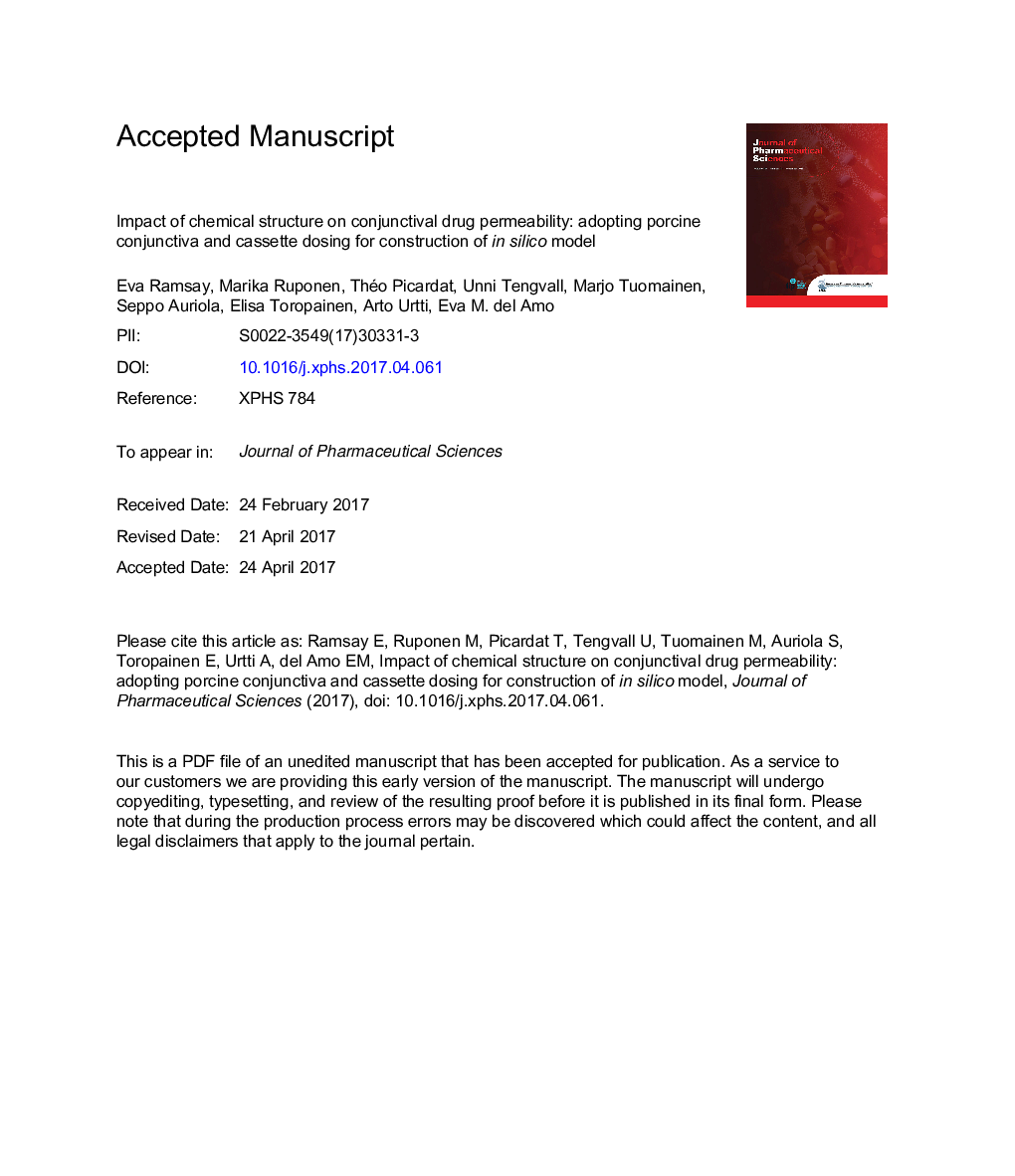| Article ID | Journal | Published Year | Pages | File Type |
|---|---|---|---|---|
| 8513955 | Journal of Pharmaceutical Sciences | 2017 | 27 Pages |
Abstract
Conjunctiva occupies most of the ocular surface area, and conjunctival permeability affects ocular and systemic drug absorption of topical ocular medications. Therefore, the aim of this study was to obtain a computational in silico model for structure-based prediction of conjunctival drug permeability. This was done by employing cassette dosing and quantitative structure-property relationship (QSPR) approach. Permeability studies were performed ex vivo across fresh porcine conjunctiva and simultaneous dosing of a cassette mixture composed of 32 clinically relevant drug molecules with wide chemical space. The apparent permeability values were obtained using drug concentrations that were quantified with liquid chromatography tandem-mass spectrometry. The experimental data were utilized for building a QSPR model for conjunctival permeability predictions. The conjunctival permeability values presented a 17-fold range (0.63-10.74 à 10â6 cm/s). The final QSPR had a Q2 value of 0.62 and predicted the external test set with a mean fold error of 1.34. The polar surface area, hydrogen bond donor, and halogen ratio were the most relevant descriptors for defining conjunctival permeability. This work presents for the first time a predictive QSPR model of conjunctival drug permeability and a comprehensive description on conjunctival isolation from the porcine eye. The model can be used for developing new ocular drugs.
Keywords
Related Topics
Health Sciences
Pharmacology, Toxicology and Pharmaceutical Science
Drug Discovery
Authors
Eva Ramsay, Marika Ruponen, Théo Picardat, Unni Tengvall, Marjo Tuomainen, Seppo Auriola, Elisa Toropainen, Arto Urtti, Eva M. del Amo,
